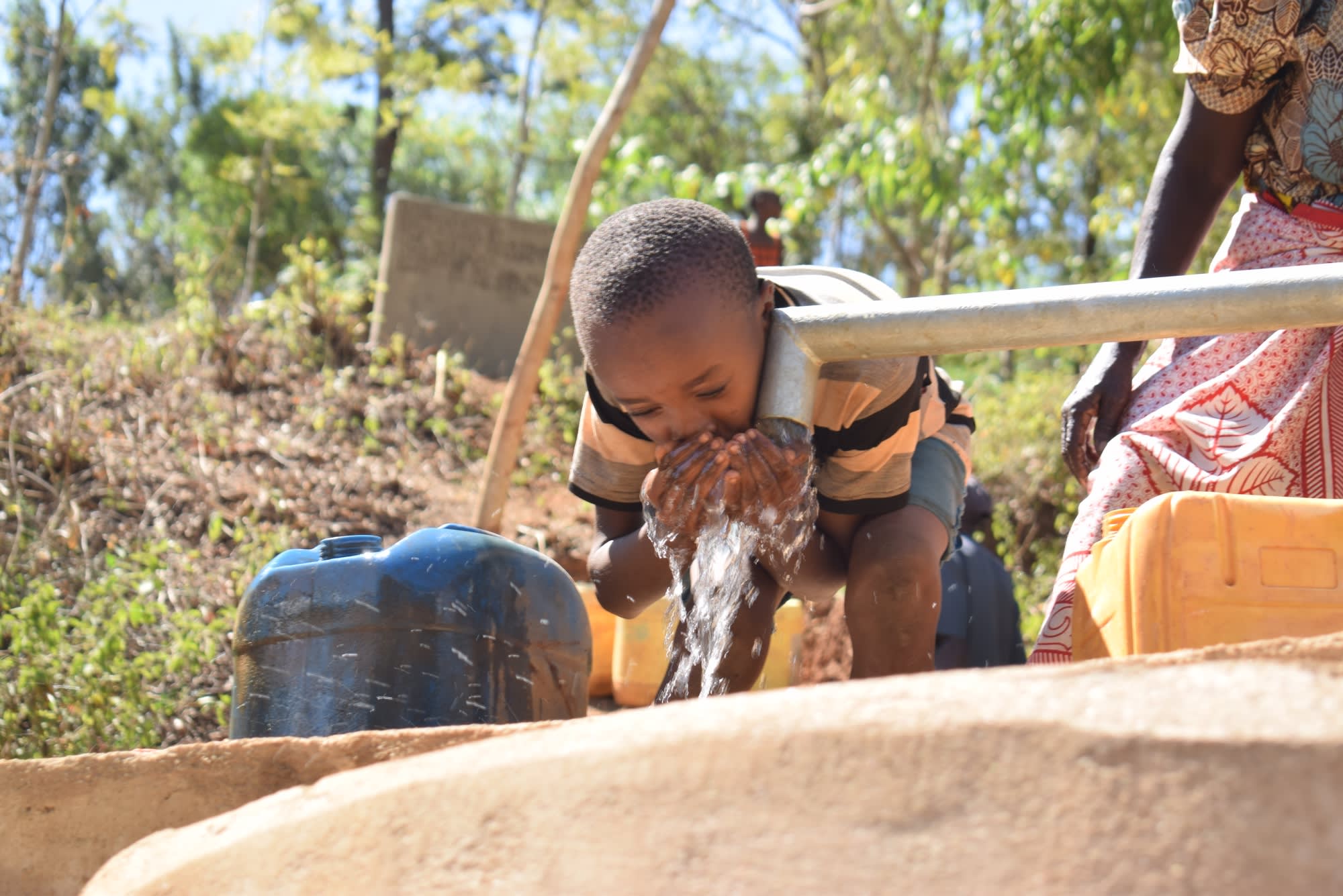There is no safe water to be found in Ivumbu Community. The more than 1,000 people who live here must walk for long distances to access the nearest water point then carry the water back home using their backs.
That is if that river has water.
The current water source is a seasonal river which is prone to running dry at certain times of the year. During the rainy season, people draw water directly from the river or by digging scoop holes in the riverbed. The water is dirty and unsafe for human consumption. I would not drink water from this source because it is open which leaves it exposed to all sorts of contaminants.
But during the dry season, community members must seek alternative sources of water that are even further away.
Some community members especially women and children have been covering large distances in search of water for use at the household level. This has exposed them to fatigue and impedes on their ability to do other work because so much of their time is spent in pursuit of water.
"Our community has been disadvantaged for many years in terms of water access," said Silas Kathungu, a local farmer.
We lack a reliable clean water supply which has led to poor hygiene levels and members using water from sources not safe for human consumption. Cases of stomach problems and typhoid among community members have been reported in the past which are associated with the use of bad water."
Ivumbu community is found in a fairly high altitude area which has favored good agricultural exploits by the community members. It is a peaceful rural location well vegetated with both exotic and indigenous tree species.
The majority of the community members are involved in subsistence farming, growing crops such as maize, peas, beans, mangoes, and bananas for family use and sell surplus which has been depending on the natural rainfall. Other community members are involved in formal and informal employment terms working hard to provide for their families.
People here work hard, but they have struggled in part due to the lack of access to safe and reliable water. But they ready for a change.
"We are committed to working hard to bring clean water close to us," Silas said.
Reliable water for people in Ivumbu
Hand-Dug Well
This particular hand-dug well will be built adjacent to Ivumbu Irrigation self-help group ongoing sand dam project (click here to see), which will supply clean drinking water once it rains. We have supplied the group with the tools needed for excavation. With the guidance of our artisans and mechanics, the excavated well will be cased, sealed with a well pad, and then finished with a new AfriDev pump.
Excavation takes a month or more on average, depending on the nature of the rock beneath. Construction of the well lining and installation of the pump takes 12 days maximum. The well will be lined with a concrete wall including perforations so that once it rains, water will filter in from the sand dam.
This well will be located in Ivumbu Village and will bring clean water nearby families that have to walk long distances for any water at all.
New Knowledge
We will hold hygiene and sanitation training sessions with the recently formed Ivumbu Irrigation self-help group and other community members. These will teach about important hygiene practices and daily habits to establish in the community at the personal and household levels. Taking good care of self and environment will make for a healthy community.
Baseline Sanitation Facility Coverage:
Latrines 90%
Handwashing Stations 0%
Clotheslines 100%
Dish Racks 20%
Bathing Area 80%
Animal Enclosure 60%
Proper Garbage Disposal 40%
These community members attempt to practice good hygiene and sanitation but the inadequate water supply has been a big hindrance. They do not treat their water, which is very dangerous to their health. Their latrines are rarely washed, they do not dispose of their garbage safely, handwashing habits are unheard of in this area, and compound hygiene is highly neglected. General training of hygiene and sanitation will be very advantageous to this group.

 Protected Dug Well
Protected Dug Well
 Rehabilitation Project
Rehabilitation Project





































